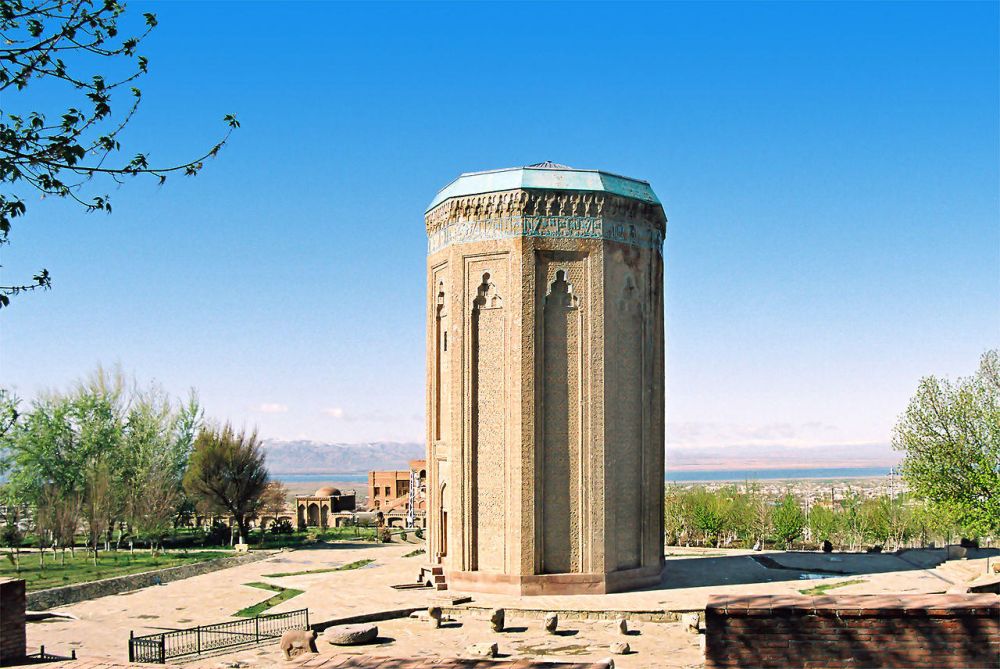

The Momine Khatun Mausoleum stands as a resplendent testament to the architectural ingenuity and rich history of Nakhchivan, Azerbaijan. This historical monument dedicated to the memory of Momine Khatun, the wife of the 12th-century ruler of Azerbaijan, Atabeg Jahan Pahlawan, has become an iconic symbol of the city and a focal point for tourists seeking to unravel the threads of Azerbaijan's past.
Built by the renowned architect Ajami ibn Abubakr in 1186, the Momine Khatun Mausoleum stands as a masterpiece of the architectural style during the Atabegs era. The monument is adorned with intricate geometric patterns and Kufic inscriptions, making it an outstanding example of the Islamic architectural heritage in Azerbaijan.
The mausoleum underwent a series of renovations throughout the centuries, most notably in the 1990s post Azerbaijan's independence, which helped restore it to its former glory. The meticulous preservation work has kept the mausoleum an enduring attraction for both local and international visitors, contributing to the historical narrative of Nakhchivan's development.
Historically, tourism in Nakhchivan, and particularly to the Momine Khatun Mausoleum, began to flourish in the 20th century, when the region started receiving greater recognition and inclusion in travel itineraries. Yet, it wasn't until the country's independence and subsequent investments in tourism infrastructure that visitor numbers started to grow significantly.
The Azerbaijani government has made concerted efforts to promote the country's cultural and historical landmarks. The establishment of museums, visitor centers, and the inclusion of the Momine Khatun Mausoleum in various cultural heritage programs have cemented its place on the tourism map.
Recent trends in tourism to Nakhchivan reflect a growing interest in immersive cultural experiences. Visitors are keen to explore the regional cuisines, local traditions, and historic sites that offer a unique insight into the past. Specifically, at the Momine Khatun Mausoleum, travelers can engage with local guides who provide in-depth historical narratives, enhancing the visitor experience.
In light of the digital age, virtual tours and online resources have also become prevalent, broadening access to the Mausoleum's history and architectural details. Meanwhile, eco-tourism and sustainable travel initiatives are taking root, as tourists increasingly seek to visit in an environmentally responsible manner.
When visiting the Momine Khatun Mausoleum, tourists can marvel not only at the breathtaking exterior but also at the deeply spiritual atmosphere within. The site is accessible throughout the year and offers visitors a unique opportunity to connect with Azerbaijan's cultural heritage.
In conclusion, the Momine Khatun Mausoleum remains a jewel in the crown of Nakhchivan's tourist attractions. With rich historical significance and a steady development in tourism, it continues to captivate those who journey to this extraordinary monument nestled amidst the mountains of Azerbaijan.